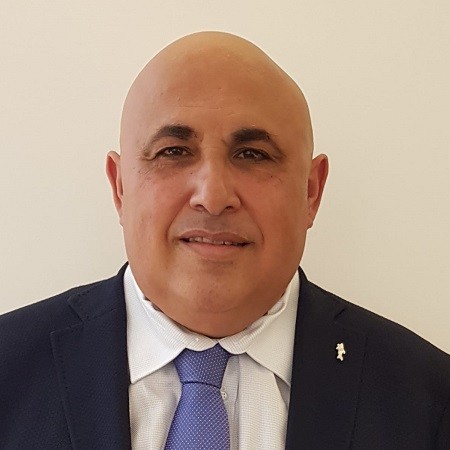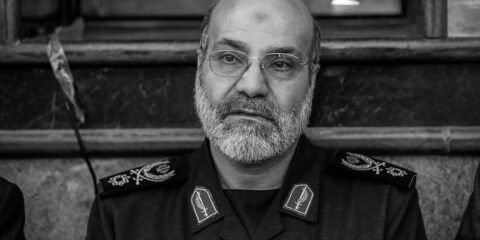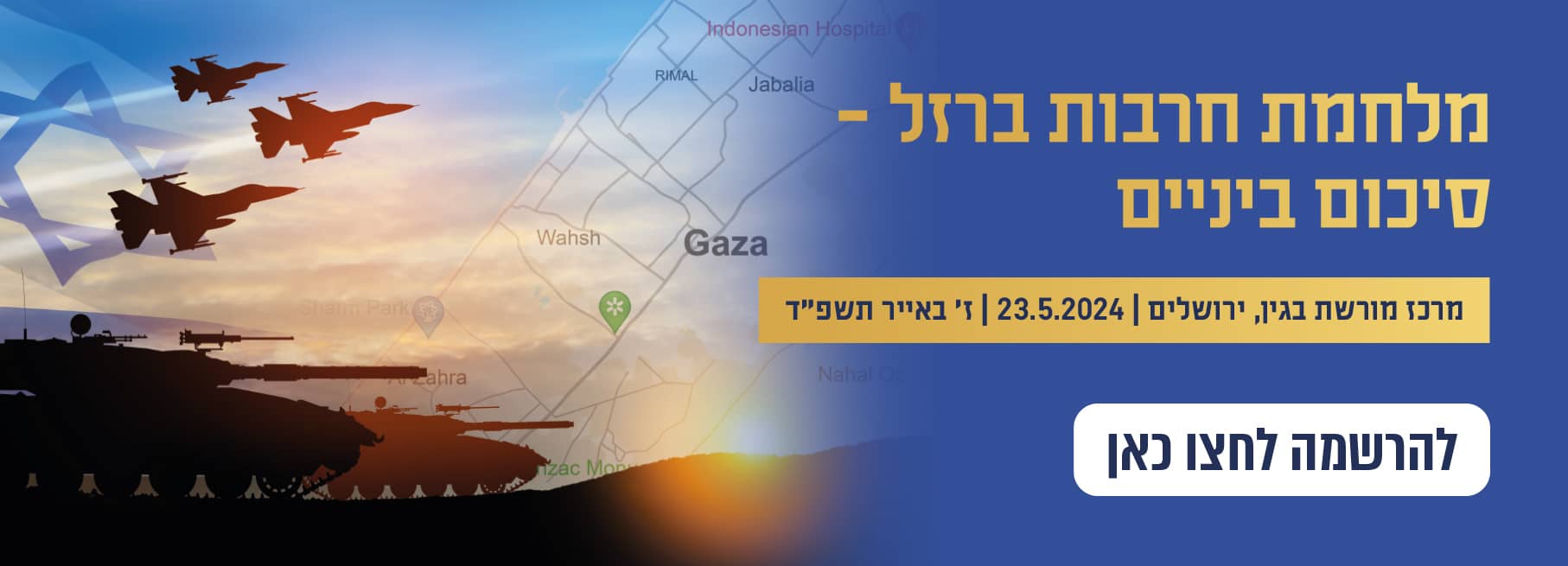The US and the West should immediately rethink their policy vis-à-vis Iran, with its campaign to take over the cultural, economic, and social spheres of countries such as Iraq, Syria, and Lebanon while linking up with Russia and China.
The eyes of the world are on the war in Ukraine, the battle between China and the United States, the emerging axis of Iran, China and Russia, and the possible nuclear agreement with Iran. Israel, meanwhile, is dealing with the growing tension on its northern border with Hezbollah, the threat of a multi-front campaign, and domestic problems. At the same time, Iran is secretly busy taking over countries in the Middle East.
Iran’s strategic plan is also aimed at the economy and society in Lebanon, Syria, and Iraq. The military activity and terrorist activity of the Iranian militias against Israel and the American forces is the tip of the iceberg for the broadest strategic activity of taking over everything as such and changing the face of society and the culture of countries to make them like Iran.
A series of classified documents from the Iranian president’s office were recently released. The Iranian opposition details the plan and its various components. As part of this plan, Iran seeks to seize significant economic assets in Middle Eastern countries, take over land and the banking system, and bring about cultural/social change in Syria and Lebanon. That is a significant strategic threat to both Israel and the West.
The Iranian activity comes against the backdrop of growing failures on the part of the United States and the West in dealing with Iran, Lebanon, and Syria, and a colossal failure to impose economic sanctions, which allows Iran not only to survive economically but also to transfer its resources to advance its strategic plans. New elements immediately enter where a governmental vacuum or a vacuum of Western influence is created. Iran’s entry into this vacuum, together with its “new friends” China and Russia, poses a long-term strategic threat to the stability of the Middle East.
That is not a new activity. The Iranian campaign began in 2014 against the background of its military intervention in Syria. Even then, Iran had already started a series of measures aimed at influencing the internal situation in Syria and linking it to Iran more strongly over time. It has made economic agreements relating to Syria’s reconstruction, shot a Shi’ite population into Syria, and even sharpened Iranian religious and cultural values. It is a member of a Syrian Shi’ite militia such as Hezbollah. This activity connected to a much broader plan beyond Syria’s borders into Lebanon, joining operations in Iraq.
Iranian assistance to save the Assad regime includes an economic price for Syria: almost completely subjugating the Syrian economy to Iranian interests – and now the Iranian president wants to repay this promissory note in full. The economic takeover plan was imposed on the strategic arm of the Revolutionary Guards, Hatem al-Anbiya. This body, founded 32 years ago, serves as the most crucial financial arm of the Revolutionary Guards, operating under the direct guidance of spiritual leader Ali Khamenei. The US and the West designated the corporation for the US sanctions list, emphasizing that it is “the engineering arm of the Revolutionary Guards that helps the Revolutionary Guards generate revenue and finance their activities.” This body is also significant in helping finance Iran’s nuclear program, ballistic missile development, and terrorist activities. With about 1.5 million employees, this body is responsible for most of the construction and infrastructure projects in Iran and abroad, turning over billions of dollars a year to finance the activities of the Revolutionary Guards.
In February, Syria and Iran reaffirmed their agreement on Syria’s debts. Syria’s obligations to Iran are estimated at more than $50 billion. The Iranian president insisted that a contract be signed between the sides so that it could be enforced in the future if Syria did not pay its debts. It is impossible to collect debts from a bankrupt country like Syria. However, the agreement allows Iran to take over Syrian strategic assets in its territory, including oil, minerals, agriculture, tourism, and more.
Iran has focused on Syria’s oil sources and raw material mines. Syria is rich in oil, natural gas, and phosphate deposits. Although most of the oil is currently in the hands of the Kurds in northern Syria, there is still considerable potential for oil that Iran wants to take over. According to the agreement, Syria will transfer several oil fields to Iran in its territory (in the Arak area) and produce 50 million barrels of oil.
The Iranians estimated that the value of oil production in the Syrian fields would reach $5 billion a year. Most of the phosphate deposits are in Syrian hands, and according to the documents, Syria transferred 1.2 billion tons of phosphates to Iran to cover its debts. Iran also received a concession to mine uranium in Syrian territory, and Damascus will allow Iran long-term access to the Mediterranean Sea to export oil and goods. Iran demanded and received approval for constructing new ports on Syria’s Mediterranean coast and extensive use of existing ports. Al-Hamidiyah Port is supposed to serve as a major port for phosphate exports and the ports of Latakia and Tartus for container transfer.
However, the economic agreement between the countries is not limited to the repayment of debts by transferring oil and minerals. The agreement contains many clauses dealing with establishing Iranian-owned agricultural farms in Syria. In northeastern Syria, the Asi River Valley is a fertile agricultural area. For years, wheat, barley, and livestock were grown. This region is gradually passing into Iranian hands. Iranian-owned farms have already been established there. Iran also seeks to take over Syria’s entire cellular communications system.
As part of Iran’s grip on Syria, Tehran is interested in demographic change in the country. Iranian “businessmen” purchased entire neighborhoods in cities in western Syria, but later, the takeover of Syrian real estate expanded to other areas as well. In effect, the Iranians replaced investors from the Gulf states, who, before 2011, were the most prominent investors in local real estate. Iran also seeks to transfer Syrian industrial plants to Iranian officials, establish factories in Syria, designate a factory to produce tractors and buses (a signed agreement), and establish a free trade zone in Homs.
Iran wants to develop the tourism sector between the two countries. It seems that behind the idea of taking over the tourism sector is the desire for many flights between Iran and Syria to deepen the cultural and social ties and increase Iranian influence in Syria. In this context, the Iranians plan to establish Iranian-owned tourism coordinators in the Zidani area of Aleppo and establish large tourism offices.
Hatem al-Anbiya was also tasked with the massive project to take over Lebanon’s economy. Hatem al-Anbiya, which, as mentioned, is on the sanctions list, employs two subcontractors to promote the project: NIROGOSTAR Specialized Group and, under it, MILAD INTERNATIONAL GROUP. From the Iranian perspective, and according to Iranian opposition documents, the takeover of Lebanon is even more important than Syria’s and significantly broader in scope. The Iranian president is seeking to take advantage of the unprecedented crisis in Lebanon and the chaos in Lebanon to carry out a social and cultural revolution there. At the end of a process, some of which is “Shi’ite” (Lebanon’s Shi’iteization), Lebanon is supposed to become an Iranian protectorate.
Iran is working to connect Lebanon economically and culturally to Iran. In this framework, Iran seeks to link its electricity system to those of Iraq, Syria, and Lebanon, based on green energy. In transportation, the goal is to establish an overland transit route from Iran through Iraq and Syria to Lebanon and the Mediterranean Sea. Iran is interested in diverting the resources of Lebanese businessmen to extensive investments in Iran, turning the Lebanese stock exchange into a source of investment for Lebanese businessmen in the Iranian economy while turning the branch of the Lebanese Saderat Bank into a major conduit for money transfers. Iran seeks to revive the bilateral committee headed by the Iranian minister of roads and urban development and the Lebanese economy minister to increase significantly Iranian exports to Lebanon’s foreign currency. Despite the economic crisis in Lebanon and the lack of foreign currency, Iran wishes to sell industrial equipment to business owners in Lebanon from Iranian workshops, mainly those from an old European assembly line.
Iran sees crucial importance in academic cooperation and embracing the Lebanese student sector. That is a significant strengthening of minds that will help Iran expose Lebanese students to Shi’ite ideas and present a “positive and progressive” Iran. Iran seeks to establish joint think tanks between the two countries, bringing Lebanese students to Iran, mainly from Lebanese elites, to study the Persian language and culture. It proposes to hold joint workshops and send Iranian professors to Lebanon with an emphasis on physics. Iran also offers organized student trips supervised by professors to learn about the history and civilization of Iran.
The introduction of Iranian values and culture into Lebanon is given great weight in the Iranian plan. The goal is also to fundamentally change Lebanese public opinion regarding Iran’s culture and values. Iran seeks to hold joint cultural and sports programs, hold a Cultural Week of the Islamic Republic of Iran in Lebanon, conduct extensive activity on social networks, publish articles by journalists supporting the Islamic Revolution in popular media and social networks, and take over football clubs.
Iran also wants social and cultural activity among the Palestinian refugee camps in Lebanon to improve Iran’s status among this group. The method is to provide permanent assistance to the refugee population and to send Iranian leaders to meetings and conferences with officials in the Palestinian refugee camps.
Iran does not hide that a central part of the plan to take over Lebanon relates to the campaign against Israel and the US. A significant portion of the effort is aimed at undermining the Israeli threat to Lebanon and strengthening the resistance and the war on terror (i.e., war against Israel). From an Iranian perspective, young people in universities are a resource that will increase resistance to Israel and against American policy. The message is that America is arrogant and against human rights.
Increasing cooperation with Shi’ite dissidents from Bahrain and Saudi Arabia living in Lebanon.
Iran is taking advantage of the political reality in Lebanon to release Iranian prisoners who are in Lebanon. The goal is to obtain a sweeping amnesty from the Lebanese Justice Ministry.
Regarding the takeover of Syria and Lebanon, two additional trends are coinciding in two other arenas in the Middle East. The first is the takeover of Iraq, and the second is the distribution of drugs and counterfeit pharmaceuticals – mainly in Jordan, Turkey, and Saudi Arabia – to weaken the regimes in those countries.
Iran transferred essential components of its military to Iraq, mainly missiles, unmanned aerial vehicles, and air defense systems. In addition, Iran is moving logistical pieces to Iraq – vehicle fleets, particularly heavy trucks – that serve as a kind of land bridge for transporting missiles and other military equipment to Syria.
Iraq is a strategic military home front for Iran and a center for an economic takeover. The government in Baghdad is weak and has allowed Iran to take over oil fields on the border between the two countries and extract from them unilaterally. Before 2003, trade between the countries stood at $3 billion, and in recent years is around $25 billion a year. About 70% of the output of Iranian industry is currently exported to the Iraqi market, which has become Iran’s No. 1 export market. Iran’s goods account for about 20% of Iraq’s imports. This figure is expected to grow in the coming years.
Iran also controls religious tourism to Iraq (the holy cities of Shi’ite Islam). According to sources in Iraq, the Iranian company Shams, which is connected to the Iranian regime, is currently the strongest factor in incoming tourism to Iraq. Shams controls the number of incoming Iranian tourists and sets the rates for Iraqi hotels.
Above all, Iran has almost completely taken control of Iraq’s financial and banking sector. That was done officially, effectively allowing Iran to use Iraq as a financial platform to circumvent the American sanctions. The agreement between the countries stipulates that the Central Bank of Iran will have accounts in Euros and dinars, and gas and oil sales will be carried out based on these accounts. According to the agreements, Iranian exporters can operate through Iraqi banks, and accordingly, Iranian banks can hold dinar accounts. It was also agreed to establish branches of Iraqi banks in Iran.
Another trend behind Iran is flooding the Middle East with drugs and counterfeit pharmaceuticals, especially Captagon. Iran, together with Hezbollah’s emissary and with the cooperation of the Assad family, established factories in Syria to manufacture Captagon. The drug is smuggled from Syria, mainly to Jordan, Turkey, and Saudi Arabia. According to reports in Saudi Arabia, authorities have thwarted the smuggling of 600 million Captagon pills over the past six years. Hundreds of millions more were not stopped and found their way to the streets of a kingdom with a large market for the dangerous drug. Although Saudi Arabia is aware of the problem, the rate of Captagon use among teenagers and young adults aged 12-22 is only increasing – this is a fifth of the population. The distribution of drugs does not skip over the Palestinian Authority and Israel either. Captagon drug smuggling to the Gaza Strip, Judea and Samaria has increased dramatically over recent years.
That is part of Iran’s strategic campaign to weaken Arab countries such as Jordan and Saudi Arabia. The IRGC and Hezbollah are significantly involved in the international drug trade, whether directly or through agents. However, in recent years, with the help of senior Syrian regime officials, this activity has become part of Iran’s strategic campaign, generating billions of dollars in revenue (an estimated $30 billion a year) and a strategic blow to Iran’s enemies.
The disclosure of the documents by the opposition indicates Iran’s far-reaching goals in the Middle East. Iran is engaged in a dramatic change in the face of the Middle East, a dramatic process of Shi’ism – an economic, cultural, and social takeover that takes advantage of the weakness of the West and the weak Arab states mired in financial difficulties. This reality, of course, will make it easier to obtain a nuclear bomb. But there is Iranian influence over the entire ring around Israel, a strategic threat to Jordan, a significant weakening of the Abraham Accords, and the prevention of future agreements between Israel and countries like Saudi Arabia. The Iranian moves are intended to create the “Shi’ite corridor.”
If the Shi’ite corridor joins the currently established axis of China, Iran, and Russia, they pose far-reaching challenges to Western countries, Israel, and the Gulf states. Under cover of the war in Ukraine and away from the media, Iran is realizing the dream of Supreme Leader Ali Khamenei, who spoke in March 2006 about the “Middle East” – meaning the Arab world – as if it were “the strategic depth of the Iranian people and its revolution.”
One cannot ignore that all this Iranian activity is ostensibly carried out during a regime of (highly unsuccessful) Western sanctions. The US and the West should immediately rethink their policy vis-à-vis Iran. It is not just nuclear and terrorism but a much broader campaign related to the future of the international system. Iran’s cultural, economic, and social takeover of countries such as Iraq, Syria, and Lebanon, while linking up with Russia and China, should bring about a strategic change globally and, of course, in the Middle East.
JISS Policy Papers are published through the generosity of the Greg Rosshandler Family.
Photo: IMAGO / ZUMA Wire









 - בניית אתרים
- בניית אתרים